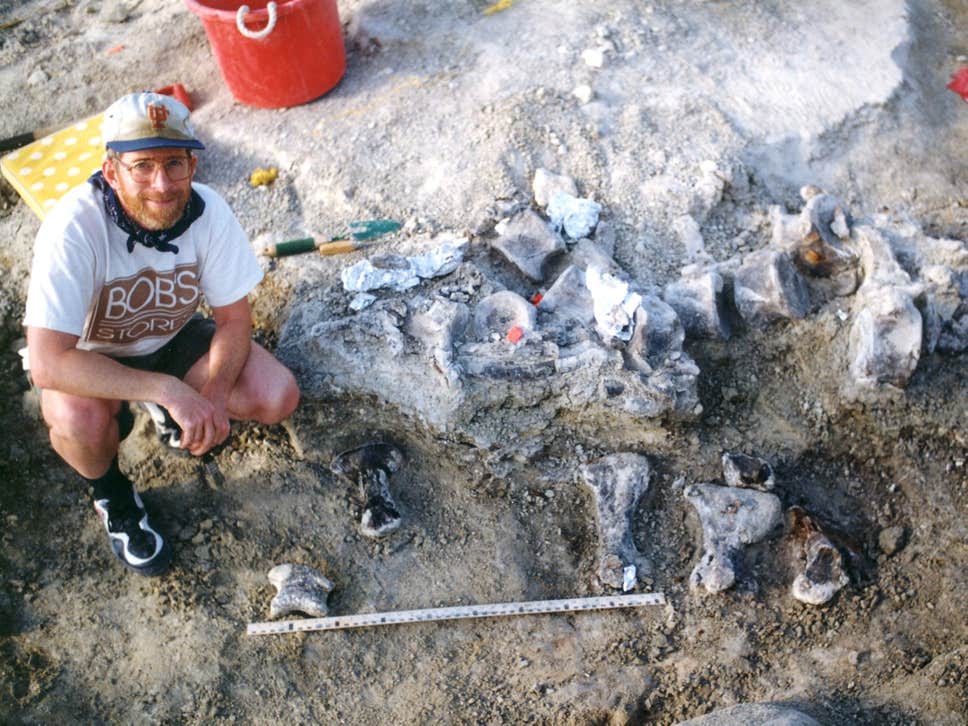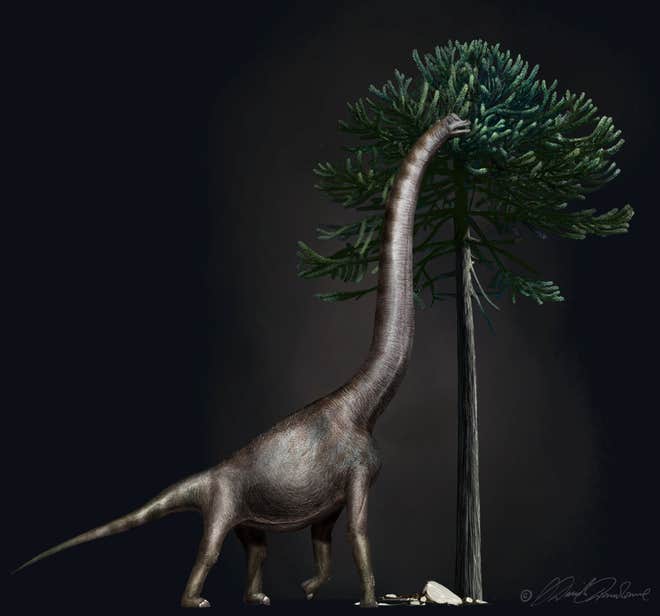@WFS,World Fossil Society,Riffin T Sajeev,Russel T Sajeev

A University of Kansas expedition crew member next to the brachiosaur foot bones, below a tail of a Camarasaurus, during the 1998 excavation in Wyoming ( KUVP/SWNS )
Measuring almost a metre wide, the largest recorded dinosaur foot ever recorded came from a brachiosaur, palaeontologists have revealed. One of the biggest creatures ever to walk the earth, The 150 million-year-old fossil was discovered in Wyoming, in 1998.
But a new study has confirmed the species – a type of sauropod – roamed a huge swath of the North American land mass during the late Jurassic period, indicating a much larger range than previously thought.They used 3D scanning and detailed measurements to compare the specimen to feet from numerous dinosaur species – allowing them to confirm for the first time the fossil is the largest ever found.
“There are tracks and other incomplete skeletons from Australia and Argentina that seem to be from even bigger animals, but those gigantic skeletons were found without the feet,” said the study’s co-author co-author Dr Emanuel Tschopp, of the American Museum of Natural History’s Division of Palaeontology.
“This beast was clearly one of the biggest that ever walked in North America.”
It was previously thought the species had not lived as far north, but the study indicates the animals inhabited a vast area from eastern Utah to northwestern Wyoming.
Dr Tschopp added: “This is surprising. Many other sauropod dinosaurs seem to have inhabited smaller areas during that time.”
The 1998 excavation was carried out by an expedition team including Anthony Maltese, the lead author of the new study.Recalling the excavation 20 years ago he said: “It was immediately apparent that the foot, nearly a meter wide, was from an extremely large animal, so the specimen was nicknamed Bigfoot.”
He added that the rock outcrops which produced the fossil – the Black Hills region of Wyoming famous for being the home of Mount Rushmore – likely holds more well-preserved dinosaur skeletons, and the team is continuing to study fossils in the region.
Source: Article By Harry Cockburn ,Independent
@WFS,World Fossil Society,Riffin T Sajeev,Russel T Sajeev



 June 9th, 2019
June 9th, 2019  Riffin
Riffin 
 Posted in
Posted in  Tags:
Tags: 